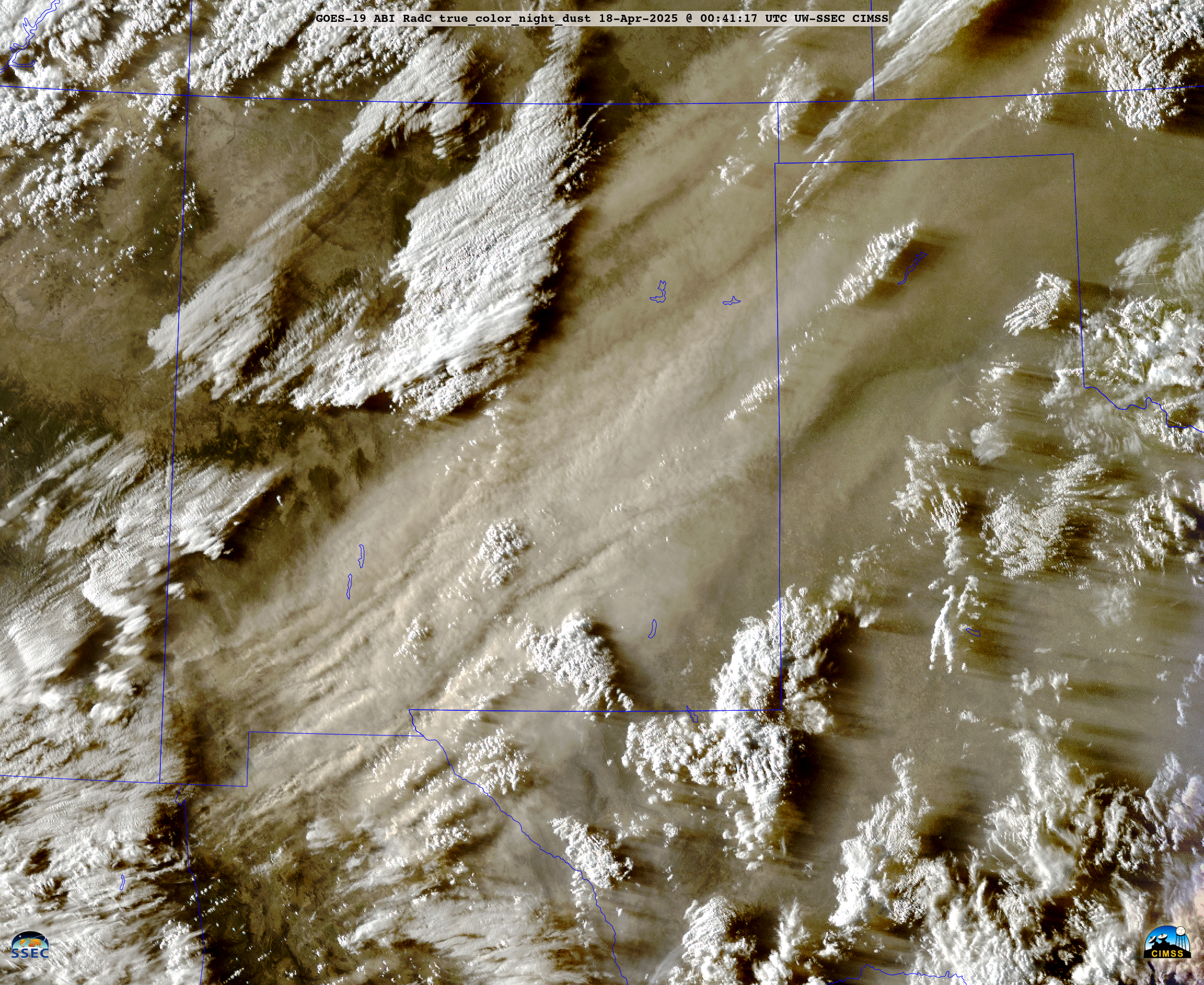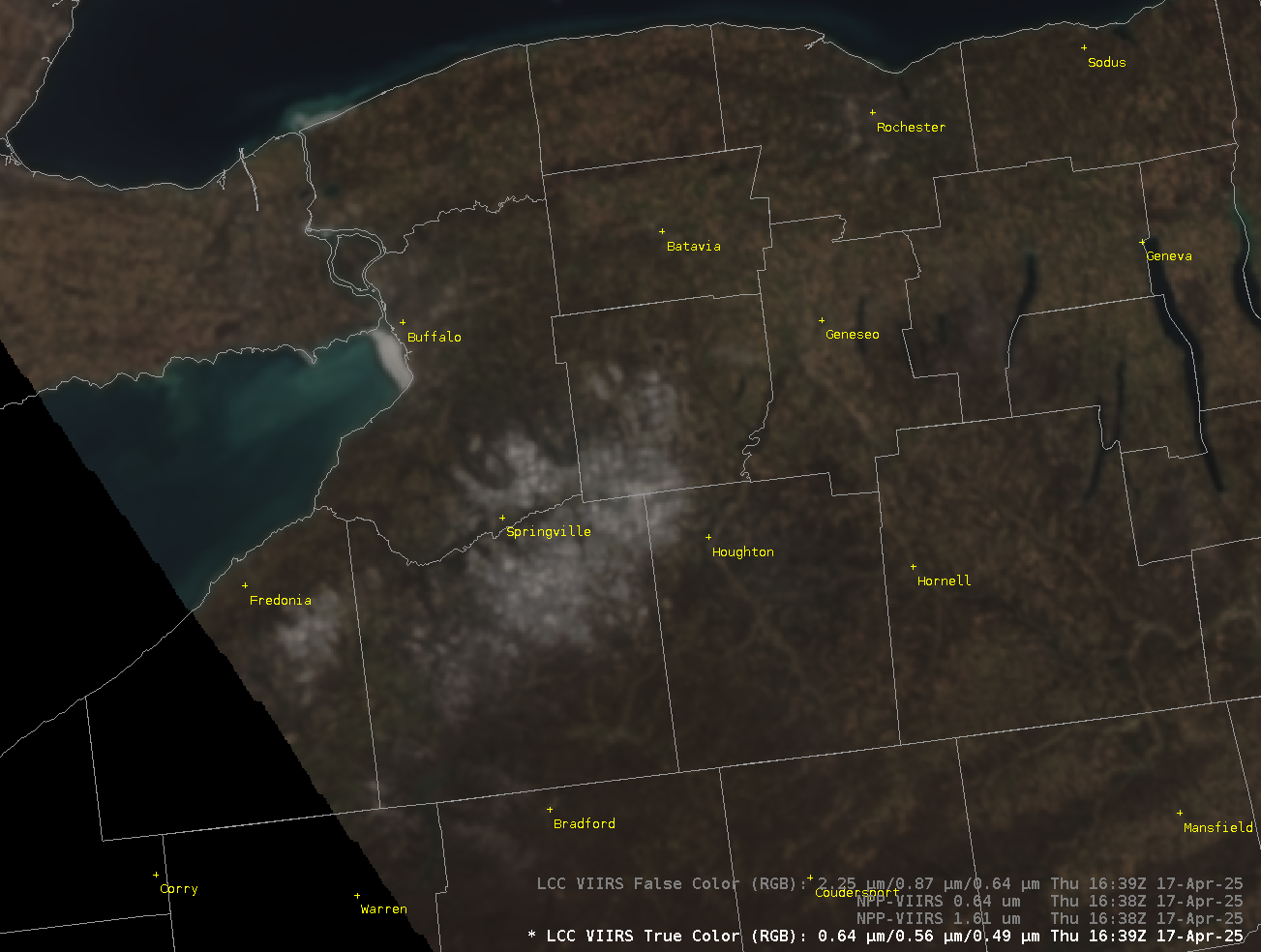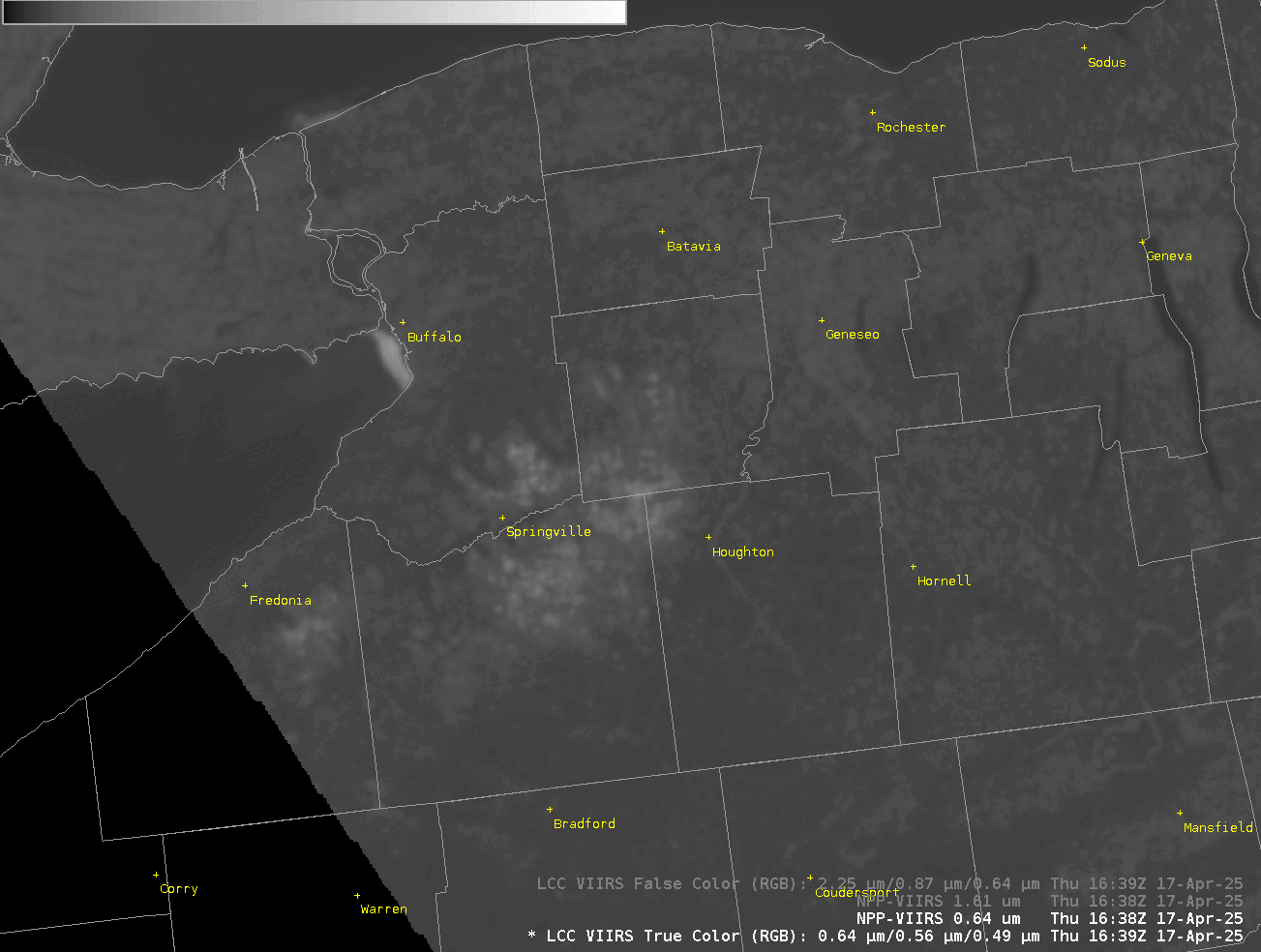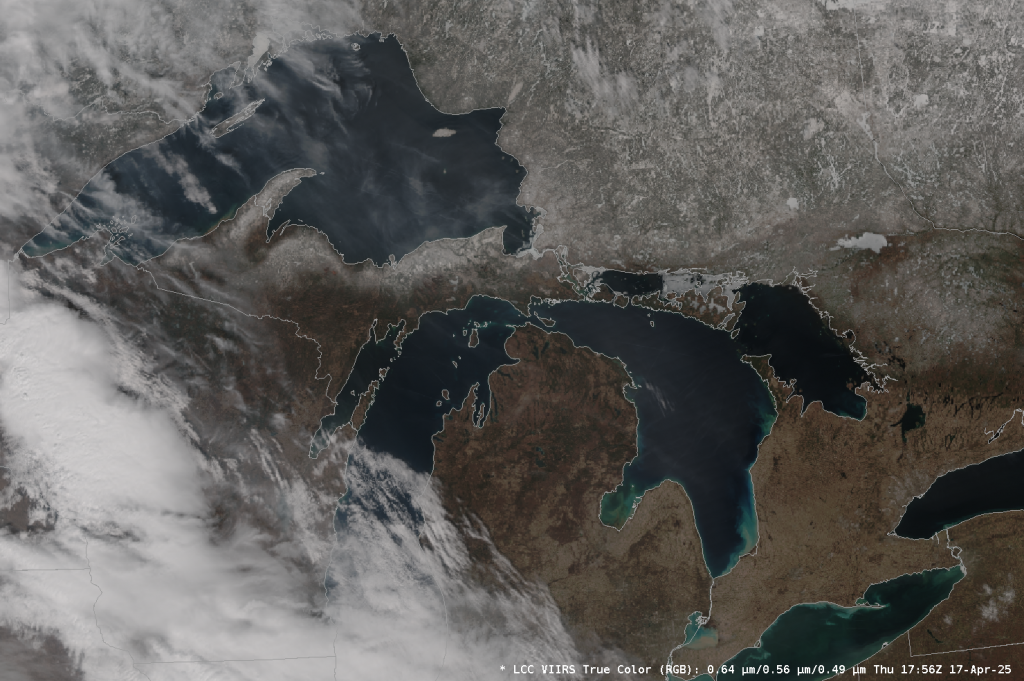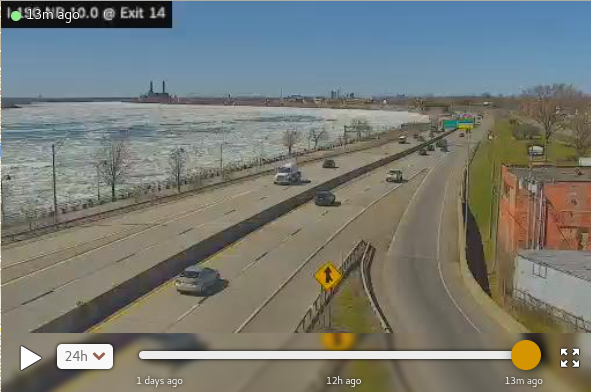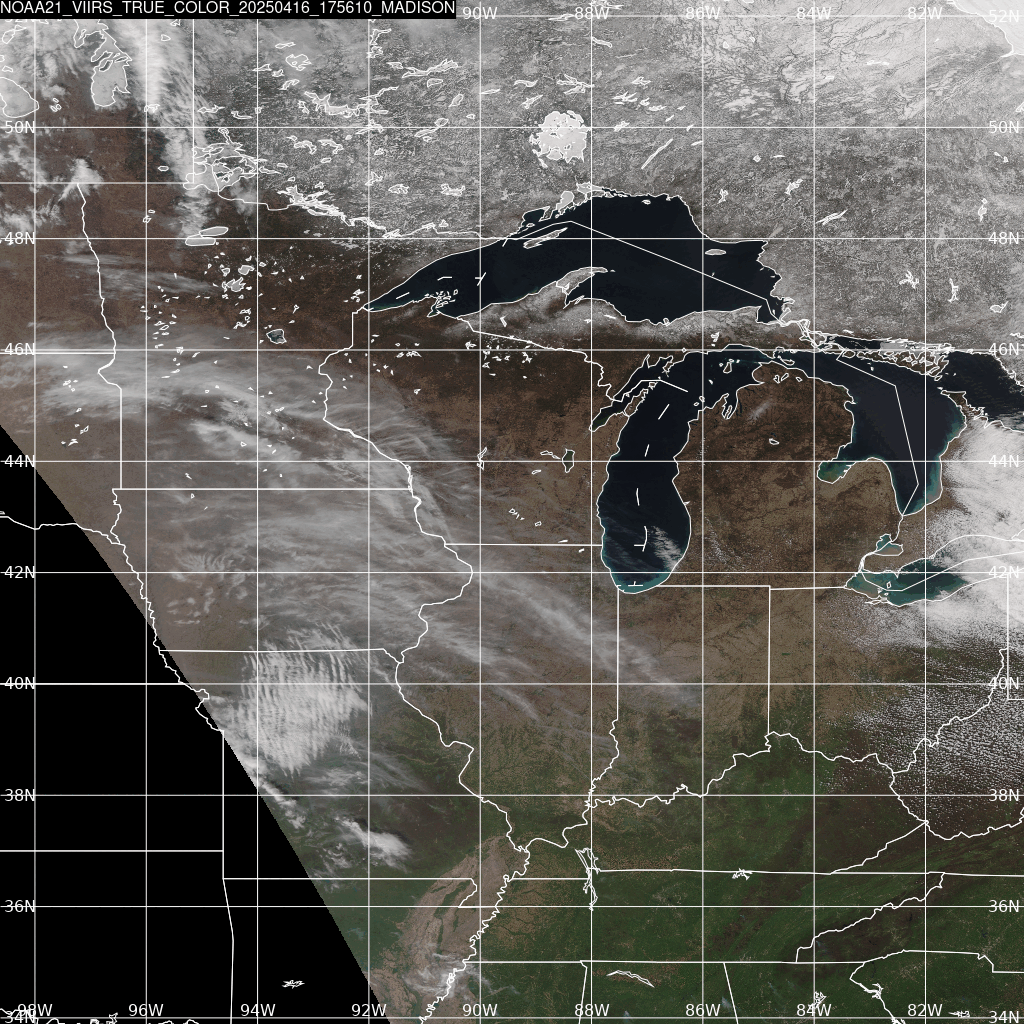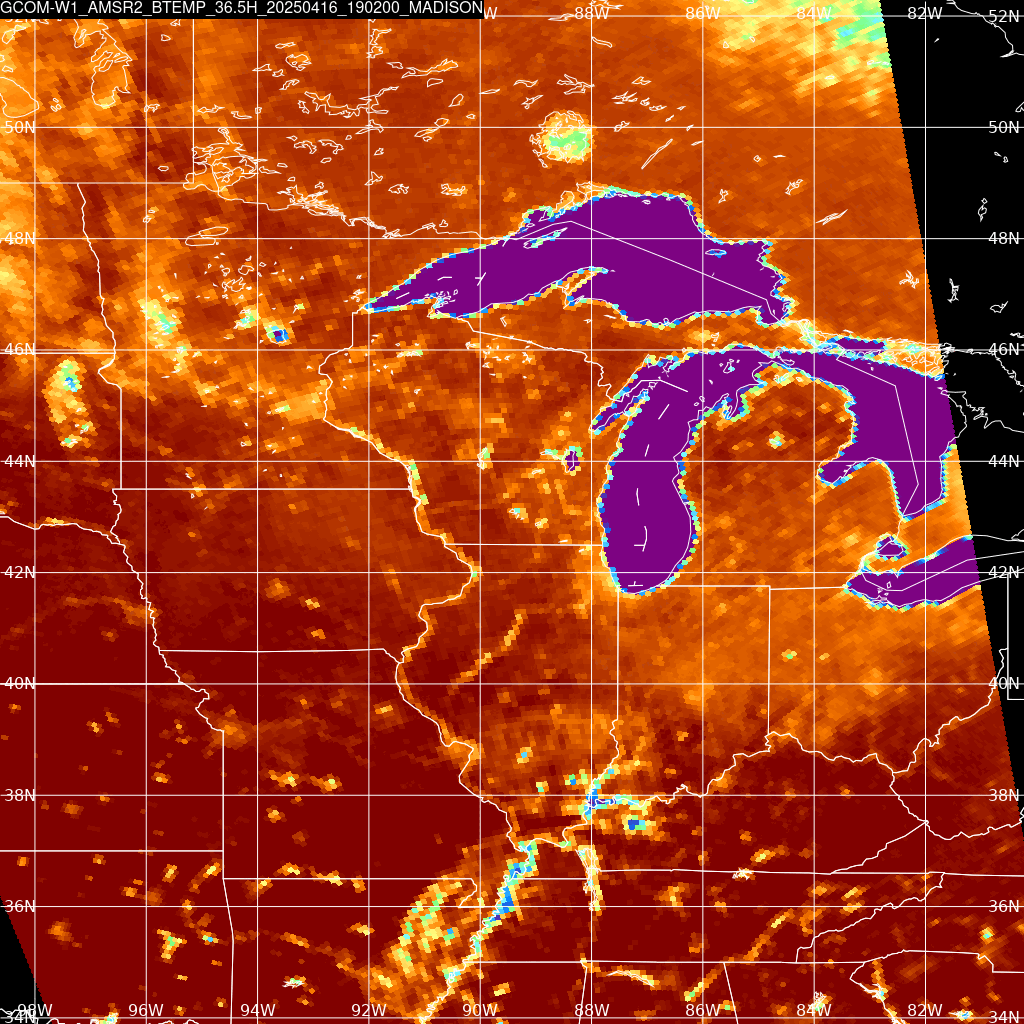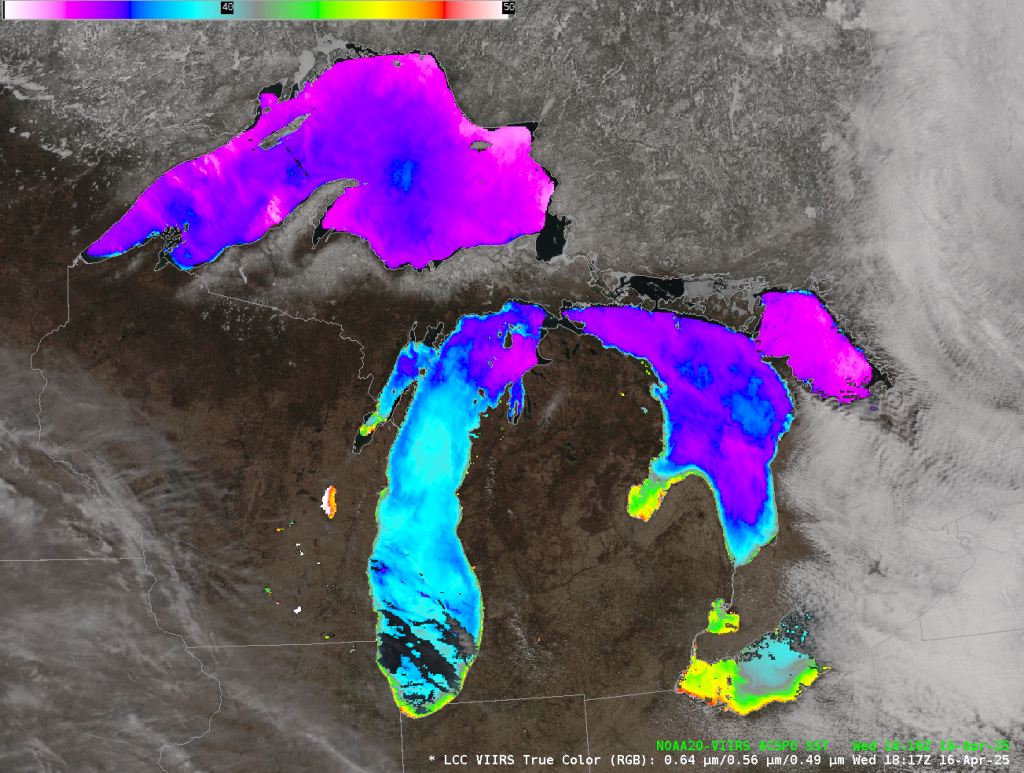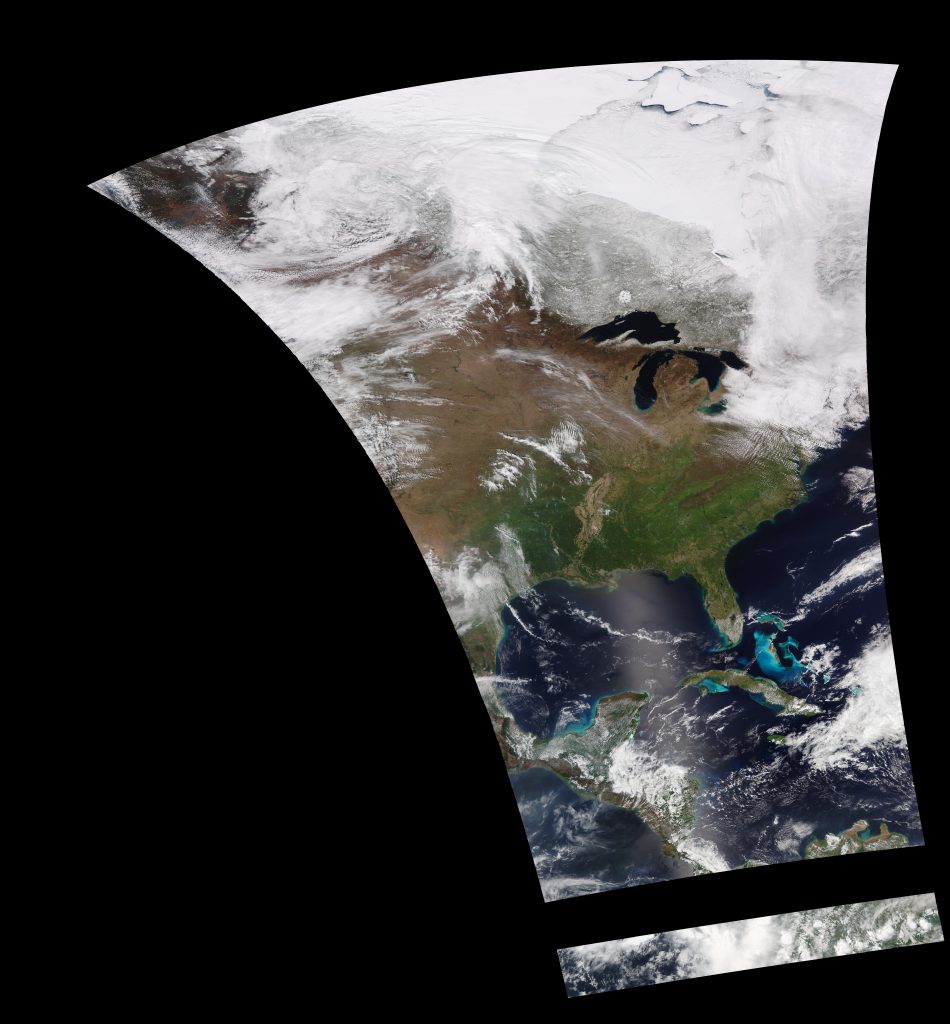
1-minute Mesoscale Domain Sector GOES-19 (GOES-East) “Red” Visible (0.64 µm) images (above) showed 2 supercell thunderstorms that produced numerous tornadoes, hail to 4.00″ in diameter and wind gusts to 86 mph (SPC Storm Reports | NWS Omaha event summary) across parts of eastern Nebraska and western Iowa on 17 April 2025. Pulses of overshooting tops in addition... Read More

1-minute GOES-19 “Red” Visible (0.64 µm) images with time-matched (+/- 3 minutes) SPC Storm Reports plotted in red, from 2200 UTC on 17 April to 0056 UTC on 18 April [click to play animated GIF | MP4]
1-minute Mesoscale Domain Sector GOES-19
(GOES-East) “Red” Visible (0.64 µm) images
(above) showed 2 supercell thunderstorms that produced numerous tornadoes, hail to 4.00″ in diameter and wind gusts to 86 mph (
SPC Storm Reports |
NWS Omaha event summary) across parts of eastern Nebraska and western Iowa on
17 April 2025. Pulses of overshooting tops in addition to
Above-Anvil Cirrus Plumes were apparent with these thunderstorms.
In the corresponding 1-minute GOES-19 “Clean” Infrared Window (10.3 µm) images (below), the coldest cloud-top infrared brightness temperatures associated with some of the pulsing overshooting tops were in the -75 to -78ºC range.

1-minute GOES-19 “Clean” Infrared Window (10.3 µm) images with time-matched (+/- 3 minutes) SPC Storm Reports plotted in white, from 2200 UTC on 17 April to 0211 UTC on 18 April [click to play animated GIF | MP4]
In a toggle between GOES-19 Visible and Infrared images at 2322 UTC
(below), there was a pronounced “warm trench” immediately downwind (east) of the cold overshooting top associated with the northernmost supercell thunderstorm. Hail of 2.75″ in diameter and a wind gust of 82 mph were reported near the overshooting top/warm trench around the time of these two GOES-19 images (note: the SPC Storm Reports are plotted at their surface location, and are not corrected for storm-top
parallax).
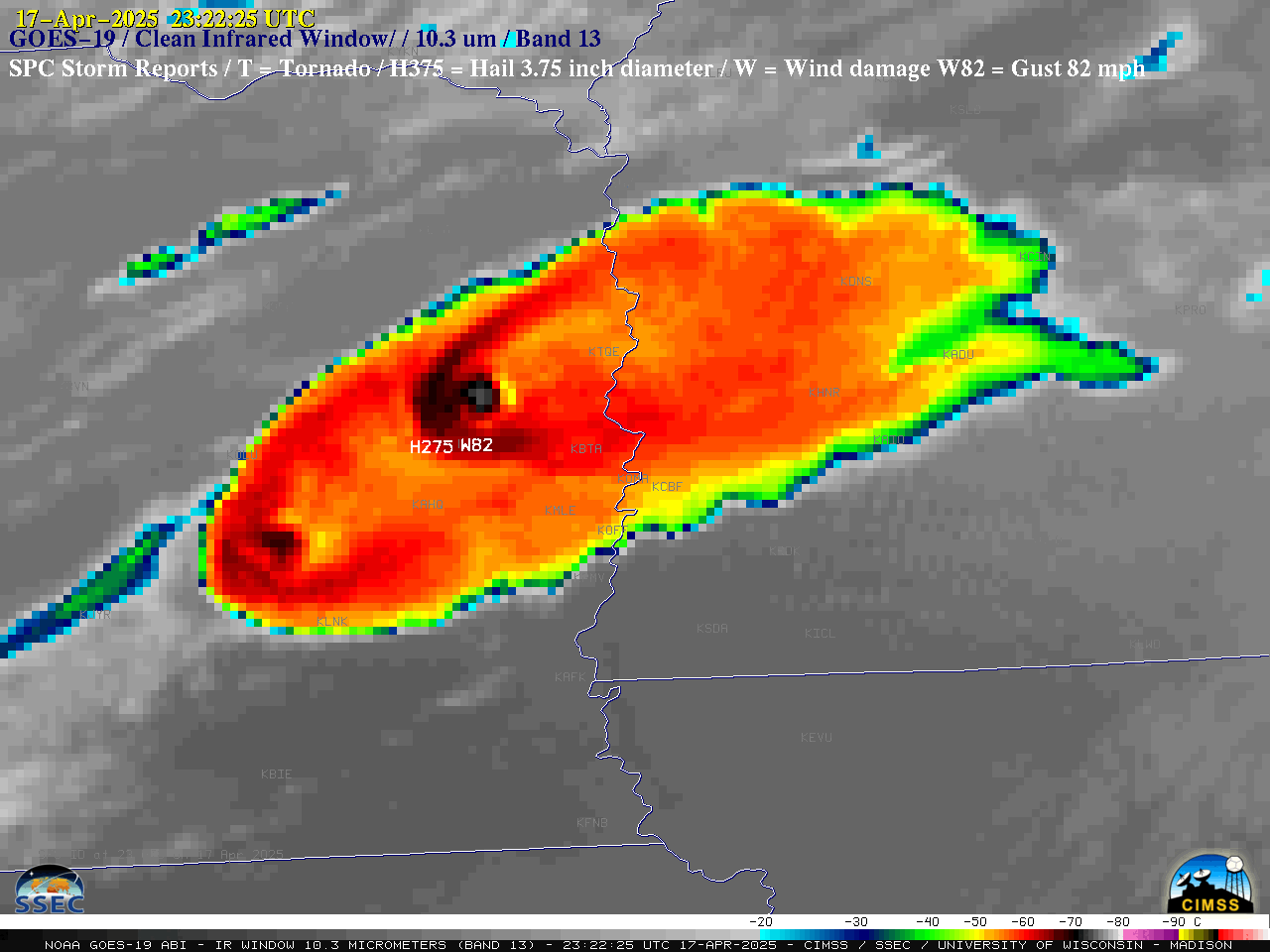
GOES-19 Visible and Infrared images at 2322 UTC on 17 April [click to enlarge]
The 2322 UTC GOES-19 Infrared image with labels of cloud-top infrared brightness temperatures of the cold overshooting top (-74.1 ºC) and adjacent downwind warm trench (-51.1 ºC) is shown below.
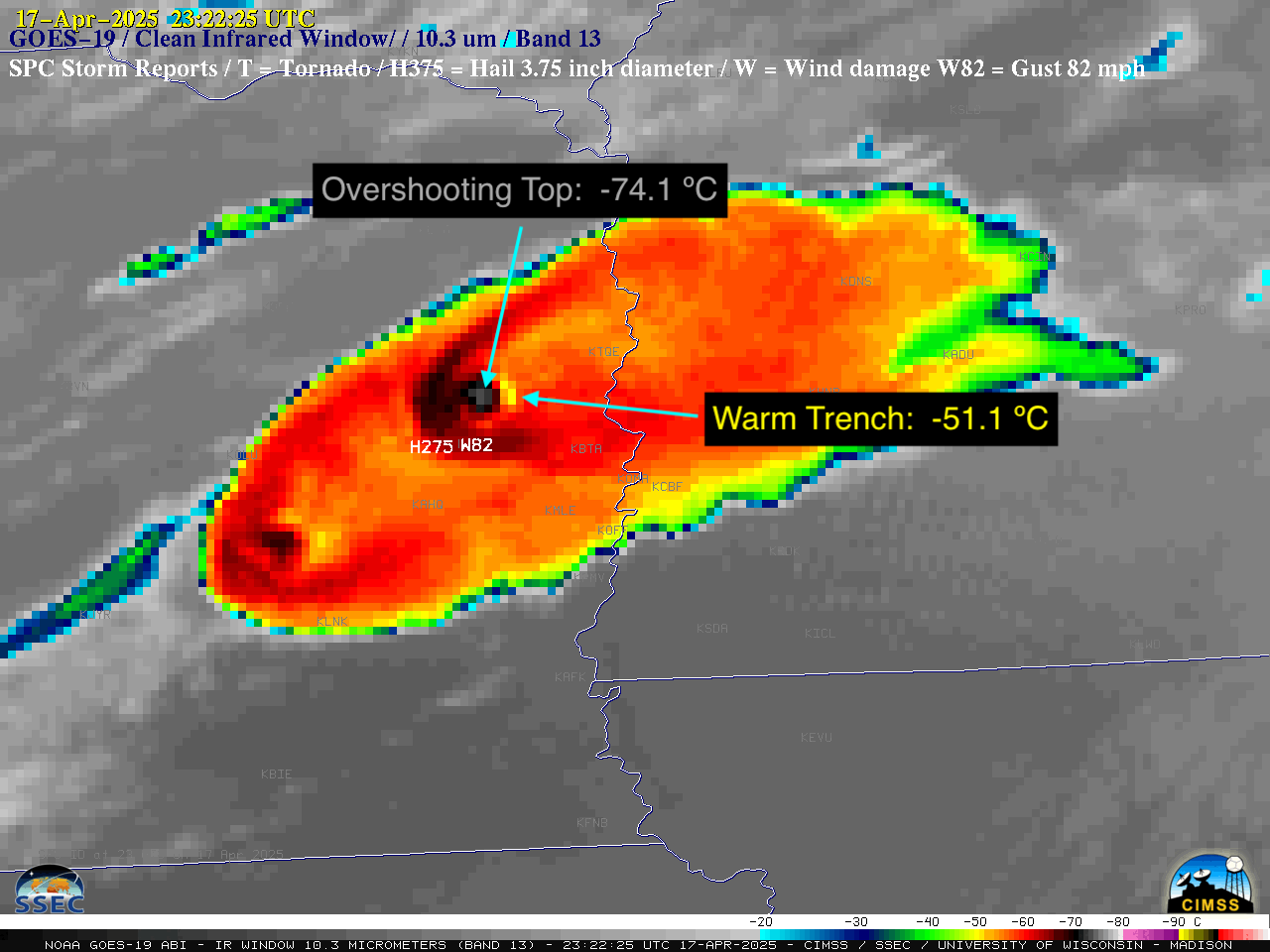
GOES-19 Infrared image at 2322 UTC on 17 April, with labels of cloud-top infrared brightness temperatures of the overshooting top and adjacent downwind warm trench [click to enlarge]
According to a plot of 2000 UTC rawinsonde data from Omaha, Nebraska
(below), the coldest cloud-top infrared brightness temperatures of -78ºC represented a ~2 km overshoot of the Most Unstable air parcel Equilibrium Level (MU EL).

Plot of Omaha, Nebraska rawinsonde data at 2000 UTC on 17 April [click to enlarge]
View only this post
Read Less








